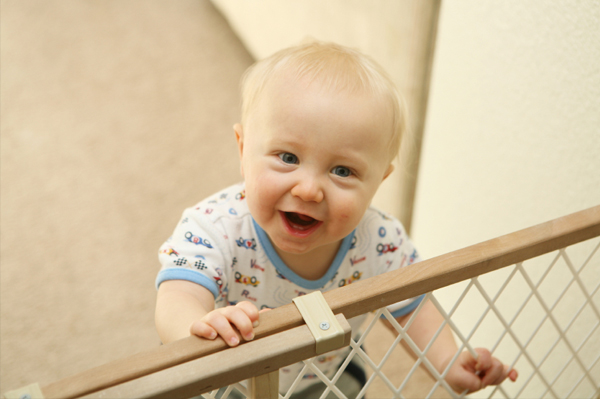Bringing a new baby into a home can be an exciting and stressful time. From purchasing all the baby gear to washing all those tiny clothes and banking as much sleep as possible, many parents feel that they have enough to worry about without having to prep the home for the havoc that a mobile baby can bring. But once those legs and arms start moving and you’ve got a crawler or a walker on your hands, you’re going to wish you’d put more thought into baby-proofing.
So to help with this ordeal, here are three things you may want to consider when baby-proofing your home in order to keep your children safe.
Knowing Where To Start
At first thought, you may not think that your home has too many danger for young children. Yes, you want to keep them away from stairs and avoid letting them put small objects in their mouths, but that’s pretty much it, right? Wrong!
According to KidsHealth.org, one of the first places a parent should start when baby-proofing the home is on their own hands and knees. By getting down on baby’s level and seeing firsthand what you have that could potentially harm your child, you’ll be a lot more prepared for when your kid starts roaming all over the house.
Age-Appropriate Toys
Not only can items you already have in your home be dangerous to keep around your small children, but things you bring into your home specifically for baby can have the potential for hazards as well. One thing many don’t think about but that needs its own form of baby-proofing is toys. Donecia Pea, a contributor to Mom.me, recommends for parents to read child toy labels carefully for the age ranges. Giving a toy to a child before he or she is ready physically or developmentally for that toy could prove to be hazardous, so make sure you’re only giving your little ones toys or objects appropriate for his or her age and size.
When Baby-Proofing Fails
No matter how hard you try to prevent any harm from coming to your child through your baby-proofing efforts, your kids are still bound to find a way to hurt themselves. When this happens, it’s good to be prepared for potential emergencies. BabyCenter.com suggests having emergency number programmed on your home and cell phones as well as having an extensive first-aid kit on hand to help you handle any cuts, scrapes or bruises your children might inflict upon themselves.
Baby-proofing is a great way to keep your children safe while in the home. If you’re just getting started on your baby-proofing, use the tips mentioned above to help you cover all your bases.
Originally posted on June 24, 2016 @ 7:32 am
